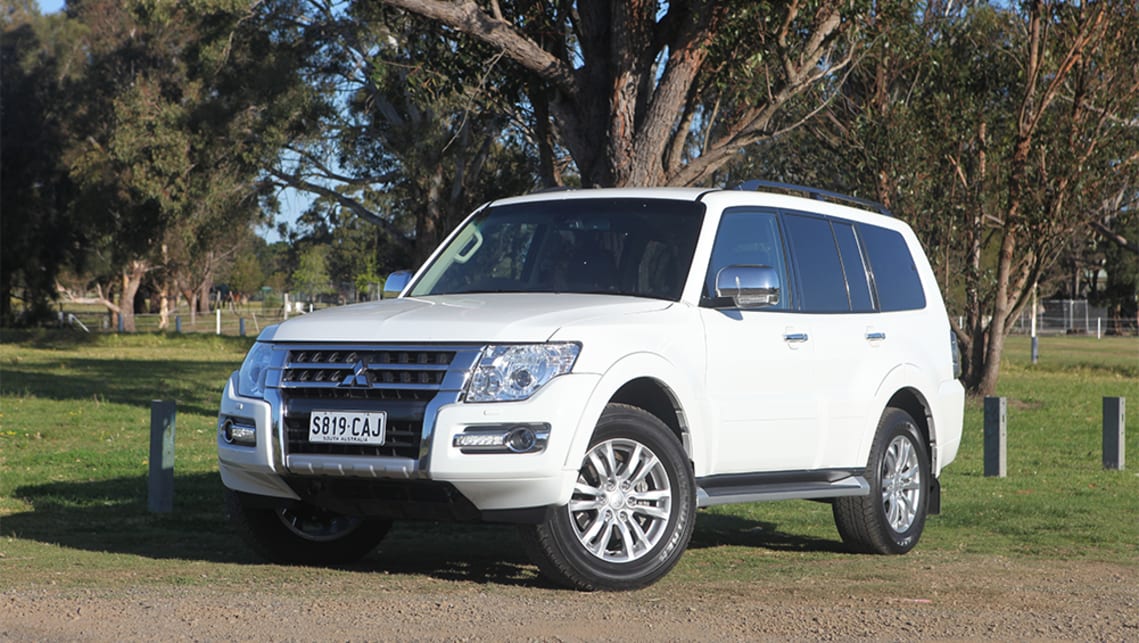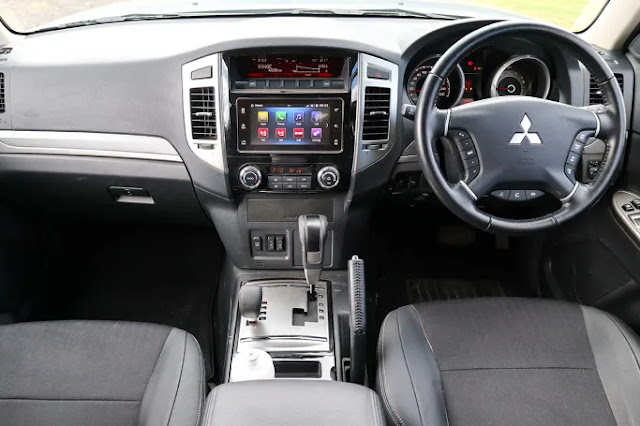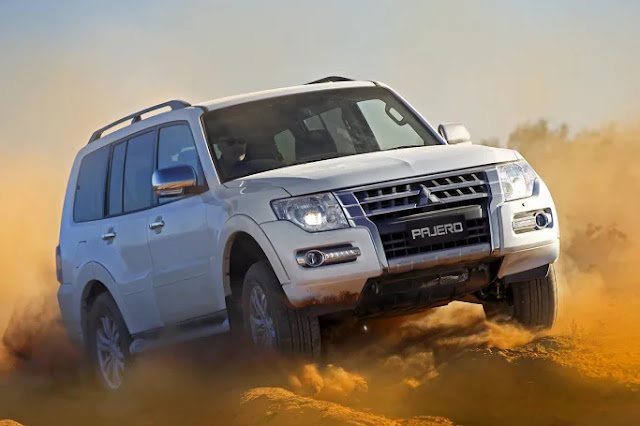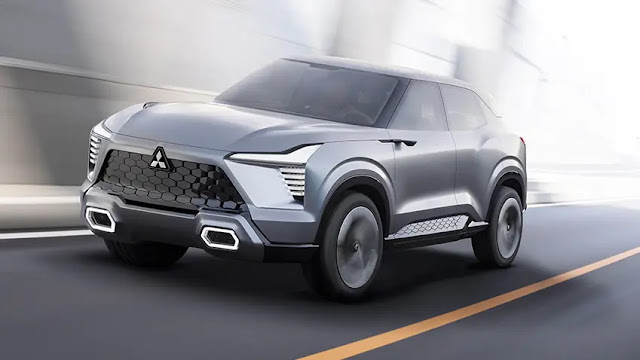Used Mitsubishi Pajero FAQs answered

Not many cars make it to the 20-year mark with just the odd facelift. But that’s exactly what the Mitsubishi Pajero has achieved.
It also remains as one of the last, off-road focussed station-wagons you can buy in a sea of SUVs and dual-cab utes.
So it’s hardly typical these days, but is it still relevant? And exactly what is it capable of?
What do we love about the Mitsubishi Pajero?
Mitsubishi’s long-lived Pajero off-roader is one of the last, true, off-road specialist vehicles.
It’s a good size, built tough and decent to drive on the road. A proper all-rounder with a hard edge.
Does the Mitsubishi Pajero have any common problems, issues or faults?
Complaints from Pajero owners seem to be pretty rare. At least in a common-issue sense and the vehicle appears to be pretty well resolved (as any vehicle that has been around as long as this one should be).
The complex driveline of a modern four-wheel-drive is often a cause for concern, but the Pajero for sale doesn’t seem to have any inbuilt weak points.
Nor do automatic transmission problems seem to worry it.
On manual cars, make sure the clutch doesn’t shudder when you take off as this can be a sign of worn parts.
Both petrol and diesel engine versions of the Pajero for sale seem to be reliable.
How much does a Mitsubishi Pajero cost?
Because the Pajero was on the market for so long, there’s an enormous gap between the highest and lowest price.
Check out the prices on the used Pajero models at Group 1 Mitsubishi to get a better idea.
How much can a Mitsubishi Pajero tow?
Early versions of the Pajero started out with a towing capacity of 2500kg which doesn’t sound like much in the context of modern dual-cab utes with 3500kg limits.
Even the later versions were stuck with a 3000kg limit with a braked trailer.
But the car’s all-wheel-drive and inherent strength make it a good tow vehicle and you won’t see too many Pajeros without a tow bar fitted.
The Mitsubishi has always done pretty well in independent tow tests.
What features come standard with the Mitsubishi Pajero?
Because the Pajero has spanned a full two decades in production, early cars will seem a bit light on in the standard equipment department.
You won’t for instance, find a navigation system (GPS) or Bluetooth in an early Pajero, but later versions will definitely have it as standard.
The later cars should also have things like cruise control, a sunroof and a crucial piece of safety gear, a reversing camera.
Some owners added a diff lock and just about all Pajeros will have air-conditioning fitted. Just make sure it blows icy cold when you hit the button.
Make sure the central locking works properly, too.
What features can you upgrade?
Because they’re so good off-road, many owners concentrated on that when upgrading their cars.
A bulbar or nudge bar was a common addition and a good way to mount a winch or spotlights, Xenon lights or a lightbar. LED headlights are another option for improving light output.
Other good upgrades include extra underbody protection, a snorkel for river crossings, beefier recovery points, a winch and maybe bigger alloy wheels with some serious off-road rubber.
The standard tool kit is typically more or less useless, so extra tools are a good idea for major expeditions.
Most Pajeros had standard side steps which get damaged pretty easily, so tougher, aftermarket steps are commonly fitted.
As for a body kit or rear spoiler, well, it’s often been said that chrome won’t get you home. Pajero owners know this.
How much storage space does the Pajero have?
Although it launched in 2000 with just a five-door, long-wheelbase body, Mitsubishi reintroduced a three-door short-wheelbase version in 2006 which lasted until 2011.
The shorty wasn’t a great seller, purely because it didn’t have enough space inside and the vast majority of Pajeros out there now (and the best buys) are the longer, five-door variants.
Even so, the LWB Pajero didn’t have the same vast dimensions as, say a Toyota LandCruiser or Nissan Patrol, so boot space is a bit tighter.
That’s especially true if all seven seats are in use at which point the luggage capacity is seriously limited.
The seven-seat layout also means a cargo barrier is out of the question.
Many owners fitted a roof rack to the standard roof rails, but a heavy-duty roof rack will carry more kilos and is a size bigger, so makes a lot of sense.
Plenty of Pajeros were set up for outback touring, too, and were fitted with rear drawers, a cargo liner and slides for fridges.
What are the key stats & specs of the Mitsubishi Pajero engine?
The Pajero launched in 2000 with the choice of diesel or petrol power.
The first diesel was a 2.8-litre four-cylinder with a turbocharger which was upgraded to 3.2 litres in 2002.
The petrol motor started out as a 3.5-litre V6 but, following the trend at the time of making a motor bigger, Mitsubishi increased the engine size in 2003 to 3.8 litres.
The V6 petrol was dropped from the line-up in 2015 after being limited to the top-spec Exceed model from 2012 until it was deleted.
No Pajero was ever factory-fitted with a supercharger.
Early turbo-diesel Pajeros were fitted with a diesel particulate filter, but Mitsubishi dropped that component for 2009 and beyond after problems with the technology.
Is the Mitsubishi Pajero 4WD and can you use it off-road?
Absolutely. In fact, it’s one of the things the Pajero does best.
The Mitsubishi is an old-school off-roader in that it uses a conventional 4X4 driveline that allows it to operate in 2WD or 4WD and can then switch to either high or low gear ratios.
Many Pajeros came fitted with a rear diff lock, too, but make sure the one you’re looking at actually has it fitted.
With a set of off-road tyres, the Pajero has huge off-road capability, and off-road reviews of the day praised the vehicle for its abilities even in stock form.
But if you want to go further into the bush, clever additions such as a dual battery system, a lift kit (to raise the body slightly and improve ground clearance) and a snorkel for water crossings are great ideas.
How does the Pajero feel to drive?
The Pajero has off-road suspension, definitely not sport suspension, but even then, it was (and remains) one of the better-driving off-roaders out there.
At the front, there’s a double-wishbone set-up that allows for decent steering accuracy, while at the rear, there’s a multi-link independent system.
Some owners have added airbags to help with towing, but most Pajeros are left alone because they work anyway.
The Pajero definitely rides better than some of its old-school, live-axle counterparts and the steering, in particular, is accurate and precise for this type of vehicle.
Are there any must-have accessories?
Like any off-roader, a Pajero will benefit from well-chosen accessories.
Aside from the off-road must-haves like a winch, snorkel and good tyres, most dealers in the day threw in floor mats, although these could be pretty second-hand by now.
A tow-bar is a popular addition, too.
Early examples will be much safer with an aftermarket reversing camera fitted.
Are Mitsubishi Pajeros reliable?
Generally speaking, yes they are.
Both the petrol and diesel engines have good reputations and the driveline seems strong and able to go the distance.
Early diesel engines with the particulate filter could be problematic and, in fact, Mitsubishi stepped away from this technology in later versions.
In fact, the diesel engine is the (relative) problem child as it can also form black deposits in the intake tract which can affect its running and fuel economy, while the diesel engine also used a timing chain which, on some vehicles built between 2006 and 2014, could stretch and break. Mitsubishi actually issued a recall to fix this.
How does the Mitsubishi Pajero interior look an feel?
The Pajero sits its occupants fairly upright, but that’s actually good for off-roading.
The rest of the deal is starting to show its age these days, although the quality and fit and finish of the plastics is quite good.
The instrumentation is clear and easy to use and there are no nasty surprises.
What is the Mitsubishi Pajero's fuel consumption?
As with any big, heavy, bluff-fronted four-wheel-drive, petrol consumption will be a major running cost if you go for the V6 version.
Diesel fuel economy is always better than a petrol’s in this market and you’ll get roughly half as much mileage per litre again by choosing a diesel.
For the record, the turbo-diesel has an official combined fuel consumption of 9.0 litres per 100km while the V6 petrol on the same test scores 13.5 litres per 100km.
Which configuration of the Mitsubishi Pajero is the best?
The inevitable comparison to make is between the long and short-wheelbase models.
Frankly, the long-wheelbase is the way to go for its seven-seater potential as well as its luggage space for trips away.
The petrol vs diesel question is harder to answer, but if you’re going outback, then the added range of the turbo-diesel will be welcome.
Does the Pajero have a manual or automatic transmission?
Most Pajero buyers opted for the automatic transmission which was a conventional five-speed unit and works well in the rough stuff.
The manual transmission is also good if a little noisy at times thanks to some bearing rumble that seems common this vehicle but doesn’t create any problems long term.
What colours is the Pajero available in?
White was a popular Pajero colour as was silver and grey.
Mitsubishi did offer the car in black, but that’s not such a great idea in hot outback conditions.
Metallic red as a big hit when the car was first released and Mitsubishi also offered the usual range of browns and gold shades that look 'correct' in the bush.
There were also a couple of shades of blue offered over the years, but with any Pajero in a metallic colour, watch out for flaking or peeling clear-coat.
What are the dimensions of the Pajero?
The Pajero is almost half a size smaller than the main competition in the form of the Toyota LandCruiser and Nissan Patrol.
All variants were 1875mm wide and the big difference between the five-door and the three-door was length and wheelbase.
The five-door was 4900mm long with a wheelbase of 2780mm, while the three-door was 4385mm and 2545mm respectively.
The difference in interior dimensions reflected those differences.
Neither version was as heavy as its direct peers, either, although the long-wheelbase model could, depending on spec and equipment, tip the scales at 2300kg or more.
The three-door was just two tonnes.
What is the Pajero's fuel tank size?
Fuel capacity is a big deal in the Australian outback where service stations are pretty scarce.
The three-door Pajero had a 69-litre fuel capacity, while the five-door had 88 litres (90 litres in early versions).
Most owners found the Pajero’s tank big enough, but some who wanted to get really outback, elected to fit a long-range fuel tank rather than carry jerry cans.
How good is the Pajero's sound system and infotainment set-up?
The newer the Pajero you buy, the better and more comprehensive will be it’s stereo and infotainment system.
Early cars got pretty much a stereo with a radio, CD player and that was, in line with what other manufacturers were doing, about it.
There’s no way to catalogue two decades worth of a large model line-up, so you really need to pay attention to what each car is fitted with and take each example on its individual merits.
Broadly speaking, though, sat-nav didn’t come to the volume-selling GLS model until 2014 while all Pajeros got Bluetooth connectivity with the 2012 facelift.
A reversing camera became standard at that point also.
Later, higher-spec examples got a lot more multi-media and touch-screen tech, and a top-rung Exceed from 2004 even had a TV receiver.
A very late GLS (the top-of-the-line by then) got the works with a 12-speaker, Rockford Fosgate stereo including a subwoofer.
Does the Pajero have Apple CarPlay and Android Auto?
Only Pajeros built for MY2016 or later have factory fitted CarPlay and Android connectivity.
Some owners have replaced the earlier entertainment system with aftermarket units that may have these features, but experience has taught us that not all of them work very well or very intuitively.
How many seats does the Pajero have?
The three-door Pajero had five seats as did base-model five-doors in the beginning.
All the other trims levels in the five-door had seven seats and that layout eventually became standard on all the five-door versions.
While leather was offered as an option (and standard on the flagship models) it remains that the rearmost seats are really for kids and even the middle row lacks a degree of comfort.
How many years and kilometres does the warranty last?
A brand-new Pajero comes with a five-year, 100,000km warranty, which is transferable to any subsequent owners.
Cars less than five years old, then, should have some of that factory warranty remaining.
It’s worth noting, though, that the warranty will only be honoured if the vehicle in question has been serviced properly.
Is the Pajero a safe car?
Given the age of the design, the Pajero has done pretty well in official safety ratings.
Early cars (pre-2007) were rated as four-out-of-five star performers, while later models scored the full five ANCAP stars.
Even the earliest versions have two front airbags, while the Exceed got side-front and side-curtain airbags which were optional on other models.
All Pajeros also got ABS brakes, stability control, traction control and seat-belt pretensioners.
From 2007 onwards, Pajeros were fitted with ISOFIX child-restraint mounting systems.
The big omissions are modern electronic driver aids like autonomous braking.
The basic design is so old now, those technologies weren’t even a thing when the Pajero was engineered.
It’s worth mentioning, too, that various Pajero variants have been caught up in the Takata airbag recall fiasco.
How good is the resale value of a Pajero?
Resale value for newer cars is pretty good as the model has a great reputation in the marketplace.
That said, there are plenty of them around, so demand outstripping supply is not likely to give prices a boost any time soon.
The caveat with all of this (particularly older examples) is that the second-hand value will be massively affected by the condition of the vehicle.
As a very off-road-capable machine, a Pajero that has seen its share of the outback is likely to have picked up a few battle scars along the way.
Buyers want to see clean, shiny cars, not ones bearing scratches from hours of driving through the scrub.
A highly modified example will likely also put buyers off.
Is the Mitsubishi Pajero a good car?
The Pajero excels in the business of offering as much off-road ability as anybody is ever likely to demand along with more civilised on-road manners thanks to its more sophisticated suspension (compared with its major competitors).
Seven-seat SUVs and cross-overs have largely replaced vehicles like the Pajero as family cars, and that makes sense.
But if you want a car that can tackle the great outdoors rather than simply look like it can, then the Pajero is a good choice.
Article from: https://www.carsguide.com.au/car-reviews/mitsubishi-pajero-79789














Comments
Post a Comment